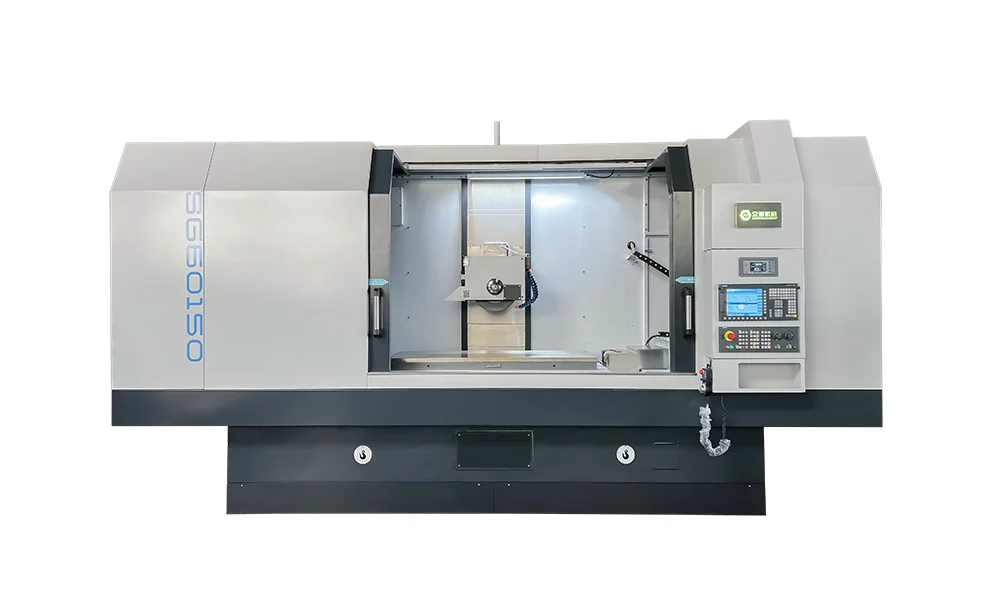- This topic is empty.
-
AuthorPosts
-
15/08/2025 at 18:21 #80044
In the constantly evolving automotive industry, precision, efficiency, and consistency in manufacturing processes are critical. One key machine that plays a pivotal role in meeting these standards is the 2-axis CNC surface grinding machine. This equipment is widely utilized in the production of automotive components that demand exceptionally fine finishes and high dimensional accuracy. In this blog post, as a high performance automatic surface grinding machine provider, Nantong Zode will share the importance of 2 axis CNC surface grinding machine in the automotive industry.
Understanding the 2-Axis CNC Surface Grinding Machine
A 2-axis CNC surface grinding machine is a type of precision machining tool that uses computer numerical control (CNC) to grind flat surfaces with extreme accuracy. The two axes refer to the X (longitudinal) and Y (cross) movement of the grinding wheel or workpiece. These machines are typically used for surface finishing, ensuring flatness, and achieving tight tolerances.
While some grinding machines operate manually or semi-automatically, the CNC-controlled 2-axis version automates the grinding process, minimizing human error and boosting productivity. The CNC controller enables the execution of complex machining paths and consistent operations over long production cycles.

Enhanced Precision for High-Performance Automotive Components
Automotive parts, especially those used in engines, gearboxes, braking systems, and fuel injection units, often require tolerances within micrometers. Even the smallest surface irregularity can result in malfunction, inefficiency, or failure over time. The 2-axis CNC surface grinding machine excels in delivering ultra-smooth surfaces and precise flatness, which are essential for:
-
Cylinder heads and engine blocks
-
Transmission plates and gears
-
Brake rotors and pads
-
Suspension parts and wheel hubs
This high precision not only extends the component's lifespan but also ensures safe and efficient vehicle operation.
Improved Production Efficiency and Consistency
Another major advantage of 2-axis CNC surface grinders is repeatability and cycle time reduction. Once a grinding program is configured, the machine can repeat the same operation across multiple workpieces with minimal deviation. This is particularly beneficial for mass production lines in automotive manufacturing, where thousands of identical parts must be produced with unwavering quality.
Moreover, CNC programming allows for quick changeovers between different part geometries, reducing downtime and increasing the machine's utilization rate. Automated controls also enable multi-shift or unattended operation, further enhancing efficiency.
Cost-Effectiveness and Waste Minimization
In traditional grinding processes, material waste due to over-grinding or inaccurate cuts can lead to significant cost increases. The precision and automation provided by a 2-axis CNC surface grinding machine help minimize such waste. By maintaining strict tolerances and reducing the need for secondary operations or manual inspection, manufacturers save both material and labor costs.
Furthermore, the machine’s high repeatability decreases the rate of defective parts, which lowers the overall cost per unit and enhances customer satisfaction due to fewer returns or warranty claims.
Integration with Quality Control Systems
Modern 2-axis CNC surface grinding machines often feature in-process gauging systems, allowing them to monitor and adjust grinding parameters in real time. This closed-loop control ensures that each workpiece adheres to the exact dimensional requirements, without relying solely on post-process inspection.
In the automotive industry, where statistical process control (SPC) is a critical part of quality assurance, such integration ensures compliance with industry standards like ISO/TS 16949 and helps maintain a competitive edge.
Versatility in Material and Design Handling
Automotive parts are made from various materials including steel, cast iron, aluminum, and high-performance alloys. A 2-axis CNC surface grinding machine is designed to handle this material diversity effectively. The machine's grinding parameters—such as feed rate, wheel speed, and depth of cut—can be finely tuned to accommodate different material properties without compromising surface finish or tool life.
Additionally, the machine can grind parts of different sizes and shapes due to its programmable table movement and wheel positioning. This versatility is crucial in automotive prototyping and custom part manufacturing.
Supporting Innovation and Lightweight Design
As the automotive industry shifts toward electric vehicles (EVs) and lightweight construction, the need for compact, lightweight, and high-strength components is growing. These parts require extremely fine surface finishes to reduce friction and wear, especially in high-speed rotating assemblies. The 2-axis CNC surface grinding machine provides the level of micro-finishing necessary for such advanced applications, supporting the industry's innovation-driven trajectory.
Conclusion: A Key Asset in Automotive Manufacturing
The 2-axis CNC surface grinding machine is more than just a tool—it's a strategic asset in the automotive manufacturing landscape. Its ability to provide high-precision surface finishing, automated operation, cost efficiency, and material versatility makes it indispensable for producing components that meet stringent automotive quality standards.
In an era where customer expectations, regulatory requirements, and market competition are steadily increasing, investing in advanced machining technology such as a 2-axis CNC surface grinder is not only a practical choice but a vital step toward maintaining product integrity, improving profitability, and ensuring long-term success in the automotive sector.
http://www.zodemc.com
Nantong Zode -
-
AuthorPosts
- You must be logged in to reply to this topic.